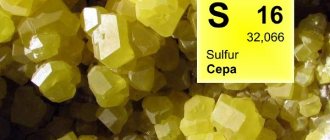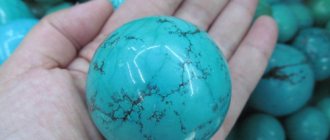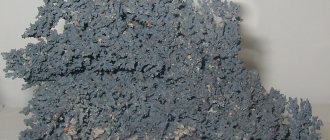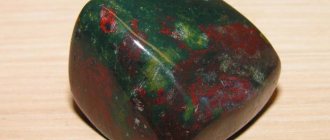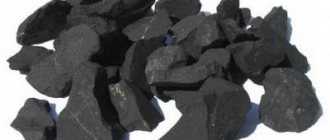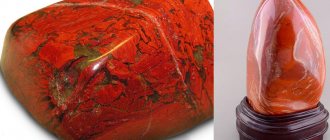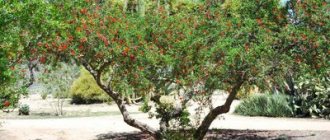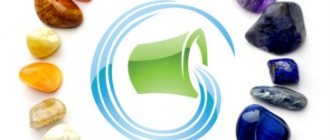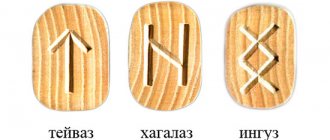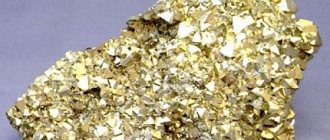A popular crystal from the group of native substances is sulfur stone, which comes in lemon yellow, red-orange and yellowish brick shades, and is of volcanic origin. Since ancient times, crystal has magical properties and healing qualities that help cure diseases. The gem absorbs negative energy, processes it, and gives its owner a charge of positivity and positive energy.
Description and external signs
It forms in salt mines, as deposits around volcanoes and within sedimentary layers. Sulfuric acid, the main derivative of sulfur, is the most important inorganic chemical used in trade, chemistry and fertilizer production. It used to be that acid consumption was one of the best indicators of a country's industrial development.
The color of the mineral is similar to the color of the surface of Jupiter's moon Io, which is explained by volcanic processes that result in the formation of sulfur.
The English name sulfur comes from the Latin word, which means “sulphur”.
According to the classification, Dana Class belongs to the class of native elements with semi-metallic and non-metallic elements, a group of polymorphs.
Classification
A subspecies of sulfur is rosickite, an unusual polymorph of the mineral. It crystallizes in a monoclinic system, whereas sulfur crystals are orthorhombic.
Chemical composition
Native sulfur consists of the chemical element of the same name (S8). In the periodic table of chemical elements it has atomic number 16. Molecular weight is 256.53 g.
Physical properties
- Mohs mineral hardness scale: 2 (similar to gypsum);
- specific gravity: 2;
- density: 2.05-2.09 (average - 2.06);
- transparency: transparent to translucent nuggets;
- color: yellow, brown or green-yellow, orange, white;
- dash color: white;
- shine from glass to strawberry;
- splitting (fracture): conchoidal (conchoidal), uneven;
- habit: prismatic, powdery, kidney-shaped (like hematite);
- Luminescence: Not fluorescent.
Optical performance
| Options | Characteristics |
| Refractive index | 1.958 |
| Maximum birefringence | 0.287 |
| Light scattering | low |
| Pleochroism | observed |
It should be noted that a low electrical conductivity coefficient affects the brittleness of the mineral when heated.
STRUCTURE
Crystal structure and two systems of sulfur
Native sulfur is usually represented by a-sulfur, which crystallizes in the rhombic system, rhombic-bipyramidal type of symmetry. Crystalline sulfur has two modifications; one of them, orthorhombic, is obtained from a solution of sulfur in carbon disulfide (CS2) by evaporating the solvent at room temperature. In this case, diamond-shaped translucent crystals of light yellow color are formed, easily soluble in CS2. This modification is stable up to 96°C; at higher temperatures the monoclinic form is stable. With the natural cooling of molten sulfur in cylindrical crucibles, large crystals of the orthorhombic modification with a distorted shape (octahedra with corners or faces partially “cut off”) grow. This material is called lump sulfur in industry. The monoclinic modification of sulfur is long transparent dark yellow needle-shaped crystals, also soluble in CS2. When monoclinic sulfur is cooled below 96° C, a more stable yellow orthorhombic sulfur is formed.
Production (field)
Primary extraction of native sulfur primarily comes from salt dome rock deposits containing the mineral. It also forms from pyrite (iron sulfide, FeS2), from sand deposits in Canada and is extracted as a by-product in smelters, industrial plants, petroleum, gasoline and natural gas refining.
Total global sulfur production in 2013 was 69 million tons, of which approximately 50% was obtained as a by-product from the development of oil and natural gas fields. The direct share of mineral extraction is 30% of production volume.
Sulfur is widespread as native deposits near volcanoes and hot springs. It is a component of sulfide minerals, for example, galena, pyrite, sphalerite, etc., and is also found in meteorites. Significant deposits are located along the Gulf Coast, as well as in large deposits of evaporitic sediment groups in Eastern Europe and Western Asia, which are most likely the result of bacterial destruction of sulfate minerals.
The Vanilla mine in the province of Cadiz, Andalusia, Spain, is a historic European deposit of the mineral.
The other two are the Muchaw mine, Tarnobrzeg, Poland and the Voinskoe deposit, Samara region, Russia.
Deposits of the mineral are found near hot springs and volcanic areas in many parts of the world, especially along the Pacific Ring of Fire. Such deposits are currently being developed in Indonesia, Chile and Japan. These deposits are polycrystalline, and the dimensions of the largest specimen were 22*16*11 cm.
Historically, Sicily was a major supplier of minerals during the Industrial Revolution. On Earth, as well as on Jupiter’s moon Io, the element is formed during volcanic emissions, including emissions from hydrothermal vents.
During 2015, 70 million tons of sulfur were produced worldwide. The top 12 mineral producing countries include China, USA, Russia, Canada, Germany, Japan, Saudi Arabia, India, Kazakhstan, Iran, UAE and Mexico.
How to fumigate a room correctly?
As you already understood, fumigation is a magical ritual, therefore, as in any other magical ritual, the emotional state of the one performing the ritual is important. If a person is tired, angry, offended, or simply not feeling well, then the ritual of fumigation should be abandoned. In any case, it will not give the desired effect (with the exception of aroma).
If you intend to clean the house where you live using fumigation, then it will be better if at the time of cleaning there is no one in the house except you. Cleaning should begin from the front door. You can learn more about how to clean a room (house, apartment or other) from our article, where this procedure is described in more detail.
So, similar to cleaning with fire, the fumigation method is no less, and perhaps even more effective, because after it there is also a certain aftertaste (in the form of a smell), which can last up to several hours.
The only difference between fumigation and fire cleaning is that you will need to constantly monitor how the smoke behaves. It must be uniform and it is extremely important that the smoke penetrates into all corners of your home. It is best to keep smoldering grass or chaga (after all, you can clean it with it) in a metal container (a Turk can also be suitable for this purpose, only after this fumigation it can no longer be used for brewing coffee). When fumigating, it is important to follow fire safety precautions. If something goes wrong, there should always be water nearby, with which you can eliminate the consequences of your failures.
History (mythology)
Being easily accessible, the mineral was known in ancient times and was even mentioned in the Bible. The text of Holy Scripture mentions sulfur in connection with the “fire sermon”, in which parishioners are reminded of eternal damnation for unbelievers and unrepentants.
According to the Ebers Papyrus (one of the oldest surviving medical manuscripts), sulfur ointment was used in ancient Egypt to treat granular eyelids. Homer's Odyssey mentions that the mineral was used for disinfection. In book 35 of Natural History, Pliny the Elder examines the mineral, mentioning that the best sources are on the island of Melos. He pointed out that it is used for disinfection, in medicine and for bleaching clothes.
Native sulfur in its natural form has been known in China since the 6th century BC. There it was first discovered in Hanzhong. By the 3rd century, the Chinese discovered that the mineral could be extracted from pyrite.
Early alchemists gave the mineral its own alchemical symbol - a cross with a triangle on top.
In traditional pre-modern skin treatments, the mineral was used in creams to relieve conditions such as scabies, ringworm, psoriasis, eczema and acne.
Schemes and modes of sulfur ore enrichment
Due to the viscosity and moisture of ores, which leads to sticking of the sieve openings, two-stage crushing in an open cycle (without test screening) is usually used.
Ore grinding is carried out in ball and rod mills using one- and two-stage schemes. The easy grindability of ore with the production of a large amount of fine sludge and with the regrinding of sulfur determines the undoubted feasibility of using a two-stage scheme. The increased fragility and softness of sulfur make the use of wet autogenous grinding promising.
In the flotation of sulfur ores, kerosene and other petroleum products (0.5–1.5 kg/t) are used as a collector, pine oil, T-80 (0.1–0.4 kg/t) is used as a foaming agent, rock depressants and harmful impurities in ores: gypsum, clay sludge and bituminous substances - liquid glass (up to 2 kg/t) and phosphates (pyrophosphate or trisodium phosphate).
Rice. 7.8. Schematic diagram of processing and enrichment of sulfur ores
After grinding to a particle size of 0.25-0.8 mm, the ore is subjected to main and control flotation with a solid content of solid steel in the pulp of about 25%, and the resulting rough concentrate is re-purified from one to four times (St = 17÷20%). The large fraction of tailings (+0.074 mm) is used in agriculture to acidify soils. Depending on the amount of harmful impurities in the ore, sulfur concentrates contain from 60-90% of sulfur when extracted to 80-95% and are sent to autoclave smelting to obtain “lumpy” sulfur (Fig. 7.8). To increase the efficiency of smelting, they strive to obtain coarse-grained concentrates. The melt tails are returned to the factory.
Scope and scope
The main commercial use of the mineral is in the production of sulfuric acid H2SO4. It, in turn, is used to produce fertilizers and is the basis of many production processes. Other uses:
- fungicides;
- insecticides;
- component of artillery gunpowder.
Pure sulfur is odorless, and the characteristic rotten egg odor associated with the mineral is formed when the powder is mixed with water, resulting in the production of hydrogen sulfide gas (H2S).
What does fumigation do?
Fumigating space then and fumigating space now are somewhat different things. And the first thing that distinguishes a modern person from a person who lived three or eight hundred years ago is that our contemporary does a lot “just for fun.” For our ancestors, luxury of the “just because” variety was unacceptable. Everything a person did was dedicated to something and always had a deep sacred meaning.
Fumigation could be accompanied by prayer, a spell, a conspiracy, and was always created to resolve a specific issue. For example, it was necessary to clean the room from negativity or help a patient cope with an illness, and perhaps avoid the death of livestock.
Smoke, which is a derivative of any combustion (and in the case of fumigation, decay), is a certain substance that acts as an intermediary between heaven and earth. Smoke is the very component thanks to which a person had and has the opportunity to turn to Higher powers with requests for help. However, in order for help to come “from there,” you need to fumigate according to all the rules and canons.
So, with the help of fumigation, you can clean the room from all kinds of negativity. If you bought an apartment, if someone you didn’t like most was visiting you, if you were robbed, if you don’t want thieves to visit you, if someone was sick or died in the apartment, then this room needs to be fumigated.
Medicinal properties
Sulfur plays a crucial role in detoxification, as it is part of one of the most important antioxidants that the body produces - glutathione.
Sulfur is part of some amino acids in the human body and is involved in protein synthesis, as well as several enzyme reactions. It is involved in the production of collagen, a substance that forms connective tissue, cells and artery walls. In addition, it is part of keratin, which gives strength to hair, skin and nails.
Arthritis
According to the University of Maryland, USA, sulfur supplementation has a positive effect on the treatment of osteoarthritis, rheumatoid arthritis and psoriatic arthritis. Sulfur or mud baths relieve swelling caused by arthritis. Applying a cream that contains dimethyl sulfoxide may reduce pain in some types of arthritis. Taking a dietary supplement containing 6 mg methylsulfnylmethane sulfur relieves arthritic pain, and when combined with glucosamine, its effect is even greater.
Skin diseases
The positive effect of using sulfur has been proven for skin diseases, including acne, psoriasis, warts, dandruff, eczema and folliculitis. Creams, lotions and soaps containing sulfur are used to relieve swelling and redness caused by acne. Dermatitis and scabies are treated with specialized sulfide ointment.
Dietary supplements
There are no specific requirements for additional intake of sulfur in food, since the required amount is absorbed along with regular food. It is found in animal protein-rich foods such as dairy products, eggs, beef, poultry and seafood. In particular, egg yolks are one of the high-quality sources of sulfur. You can also increase its consumption by adding onions, garlic, turnips, cabbage, seaweed and raspberries to your food. Nuts are an additional source of plant-based sulfur.
Scientists recognize that a lack of the element in the body may be one of the causes of Alzheimer's disease, the number of cases of which is increasing every year.
It should be noted that without sufficient sulfur, metabolism is disrupted. This in turn leads to damage to muscle and fat cells and, as a result, causes glucose intolerance. A dangerous condition known as metabolic syndrome occurs when the body compensates for defective glucose metabolism and gains weight.
Some researchers link a lack of sulfur in the body with the spread of heart disease.
Health effects of consuming foods with sulfur
Countries whose populations consume more sulfur in food are ranked among the healthiest countries
Greece, Italy and Japan are the primary suppliers of sulfur for the whole world. Is it not a coincidence that these countries have some of the lowest rates of heart disease and obesity? Most likely no. Icelanders are least likely to suffer from depression, obesity, diabetes and cardiovascular disease.
Some researchers associate these indicators with the country's volcanic belt. Periodic eruptions cover the ground with sulfate-containing rocks. This enriched soil allows plants and animals to grow. In turn, residents of the country who eat washed products significantly improve their health.
It was previously believed that the Icelanders' diet protected them from chronic diseases thanks to fish. However, the theory was not confirmed, since Icelanders who moved to Canada and continued to eat large amounts of fish were more susceptible to disease compared to the population that did not emigrate. Thus, Icelandic soil, enriched with sulfur, plays a decisive role in ensuring immunity and getting the body enough of the mineral.
Biological role
Sulfur is an important biogenic element. It is part of a significant number of amino acids. A component in the formation of protein structures. In bacterial photosynthesis, the mineral takes part in the redox reactions of the body and is a source of energy. In the human body, there are about two grams of sulfur per kilogram of weight.
Sulfur in its pure form is not a toxic substance, unlike volatile gases, which include sulfur dioxide, sulfuric anhydride, hydrogen sulfide, and so on.
Household use
Sulfur is primarily used as a precursor for other chemicals. Approximately 85% of the product is converted to sulfuric acid. Since it is important to the world economy, its production and consumption are an indicator of the industrial development of a country.
The main use of acid is in the extraction of phosphate ores for the production of fertilizers. It is also used for oil refining, wastewater treatment and mining. Sulfur reacts directly with methane to form carbon disulfide, which is used to make cellophane and rayon.
One important application of the mineral is in rubber vulcanization, where polysulfides form bound organic polymers. They are widely used in paper bleaching and as preservatives in dried fruits. Many surfactants and derivatives, such as sodium lauryl sulfate, are sulfate derivatives.
Although the mineral is insoluble in water, it is one of the most versatile elements for forming compounds. Sulfur reacts and forms compounds with all chemical elements except gold, iodine, iridium, nitrogen, platinum, tellurium and noble gases.
Sulfur in nature
Natural sulfur is rarely found in its pure state. But in the earth's crust its reserves are very significant. These are mainly ores where sulfur layers are present in large quantities.
Until now, science has not determined the cause of the occurrence of sulfur deposits. Some versions are mutually exclusive. Given that sulfur exhibits high chemical activity, it is assumed that during the formation of the surface of the earth's crust it was repeatedly bound and released. How these reactions proceeded has not been established for certain.
According to one version, it is assumed that sulfur is a consequence of the leaching of sulfates, which have become waste products of individual bacteria. The latter use mineral compounds as food.
Researchers are considering various versions of the processes of sulfur replacement in the earth's crust, which lead to its release and accumulation. But it is not yet possible to clearly understand the nature of its occurrence.
